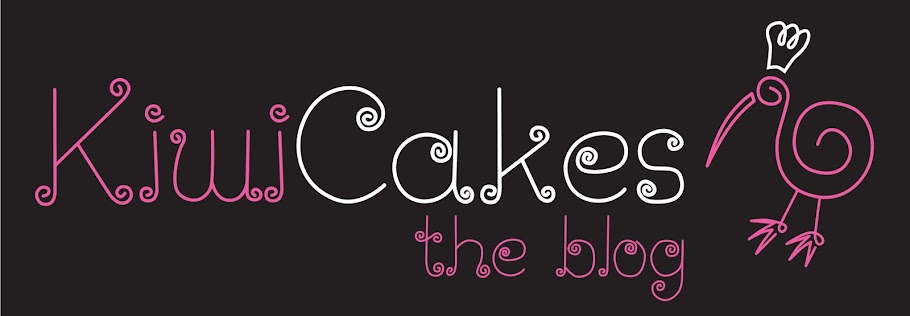This cake was a hit with my little birthday man and his friends. I think because it turned out to be so large and the fact that toy cars could be driven around it. Francesco Bernoulli and Tow Mater both made an appearance at different stages of the day and then we misplaced Lightning when it came time to light the candles Children had to restrain themselves from pulling out the fun flag picks they were just so tempting. Here is how I did it...
To achieve the tall oval I baked two 8" round cakes and two 8" square mud cakes as they carve nicely. Trim the domes off then slice the circles in half across the diameter to become the race track ends. Stick the base cakes to the board and to each other with some buttercream. Mine is peachy coloured because I used a few teaspoons of passionfruit flavacol and it was a yummy fruity hit. Roughly carve out the grandstand top and sides and arrange on top of a layer of buttercream as pictured. Once you get to this stage you can use a small serrated knife to even up the grandstand area. Then coat the whole cake with a layer of buttercream.
Roll out white fondant into a roughly oval shape that is 20" long and ease it into place. Use a cutter wheel to run around the top edge and make it neat. Smear crisco around the insides where you would like the grandstand 'crowd' to be.
Roll long strips of red fondant to wrap all the way around the cake. I did this in two pieces and kept the joins at the back. Butt it up against the white fondant at the top then moisten the join with a little sugar glue then adhere a ribbon of yellow fondant on top. Repeat around the bottom where the red joins the board.
Tip 100s and 1000s sprinkles onto the crisco-covered grandstand area. Brush up any extra that roll down and re-sprinkle to fill in any gaps. It helps to hold the cake on a slight angle for this step. Then roll out black fondant and use your cutting wheel again to freehand shape an oval with a slice up the middle to become the middle of the racetrack.
Ease it into place at the base of the cavity and leave a center strip empty to pipe with green grass made from green coloured royal icing. Complete the board with the child's name in leftover yellow fondant lettering and pipe some more grass beneath to 'ground' it.






.jpg)
.jpg)
.jpg)
.jpg)
.jpg)
.jpg)
.jpg)
.jpg)
.jpg)
.jpg)
.jpg)

.jpg)
.jpg)
.jpg)
.jpg)
.jpg)
.jpg)
.jpg)
.jpg)
.jpg)
.jpg)
.jpg)
.jpg)
.jpg)
.jpg)